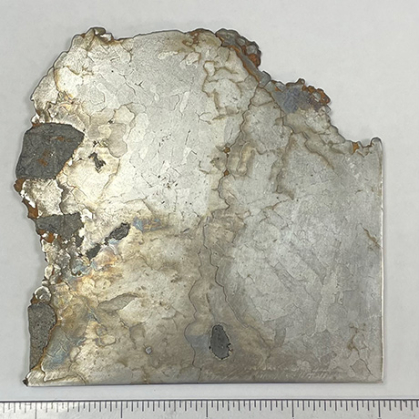Insight by Rutgers professor could aid the understanding of how and when life arose
A team led by a Rutgers-New Brunswick scientist has concluded water did not arrive as early during Earth's formation as previously thought, an insight that bears directly on the question of when life originated on the planet.
The finding, reported in the science journal Geochimica et Cosmochimica Acta, is significant because the data reported by the study support the idea that water arrived towards the final stages of Earth's development into a planet from dust and gas, what geologists refer to as late accretion.
Scientists seek to learn when the constituent materials necessary for life appeared so that they can understand how and when life began. According to present scientific understanding, at least three necessary ingredients are essential to kick-start life. These are water, energy and a soup of organic chemicals known as CHNOPS - scientific shorthand for carbon, hydrogen, nitrogen, oxygen, phosphorus and sulfur.

"When water was delivered to the planet is a major unanswered question in planetary science," said Katherine Bermingham, an associate professor in the Department of Earth and Planetary Sciences in the Rutgers School of Arts and Sciences and lead author of the study. "If we know the answer, we can better constrain when and how life developed."
Bermingham is a cosmogeochemist, a scientist who studies the chemical composition of matter in the solar system, particularly focusing on the origin and evolution of the solar system and its rocky planets by analyzing Earth rocks and extraterrestrial materials such as meteorites.
Using thermal ionization mass spectrometry and a new analytical method the team developed, Bermingham and colleagues studied isotopes of the element molybdenum. An isotope is a form of an element with the same number of protons but a different number of neutrons. This allows it to share the same chemical properties while having a different atomic mass.
"The molybdenum isotopic composition of Earth rocks provides us with a special window into events occurring around the time of Earth's final core formation, when the last 10% to 20% of material was being assembled by the planet. This period is thought to coincide with the Moon's formation," Bermingham said.
They extracted molybdenum from meteorite samples obtained from the National Museum of Natural History of the Smithsonian Institution. The scientific community has divided meteorites into two general groups - the first, "CC," with constituent elements suggesting the meteorites formed in the outer, presumably wetter, Solar System. The second group, "NC," has characteristics indicating its meteorites formed in the inner, presumably drier, solar system. This study focused on samples that belong to the NC group.

A piece of iron meteorite Campo del Cielo, one of the samples measured in the study..
They compared the molybdenum isotopic composition of these meteorites to Earth rocks from Greenland, South Africa, Canada, the United States and Japan collected by field geologists. The molybdenum in these rocks is generally considered to have been added to Earth during the time the Moon was formed, which is when final core formation occurred. This is precisely when the team wanted to search for the origins of water.
"Once we gathered the different samples and measured their isotopic. compositions, we compared the meteorites signatures with the rock signatures to see if there was a similarity or a difference," Bermingham said. "And from there, we drew inferences."
The analyses showed that the Earth rocks they studied were more similar to meteorites sourced from the inner solar system meteorites (NC) rather than meteorites sourced from the outer solar system (CC).
"We have to figure out from where in our solar system Earth's building blocks - the dust and the gas - came and around when that happened," Bermingham said. "That's the information needed to understand when the stage was set for life to begin."
Since the chemical composition of the Earth rocks they studied matches that of the presumed inner solar system (NC) meteorites, the scientists concluded that the Earth had not received as much water from the Moon-forming event as previously thought. The finding is significant, Bermingham said, because a popular theory of water delivery is that a significant amount of the Earth's water was added when the Moon was formed.
This research, however, showed that a substantial amount of water likely did not come during this period of growth. Instead, the data support the interpretation that water was delivered to Earth in smaller portions after the Moon was formed, far later during Earth's formation.
"Our results suggest that the Moon-forming event was not a major supplier of water, unlike what has been thought previously," Bermingham said. "These findings, however, permit a small amount of water to be added after final core formation, during what is called late accretion."
Other Rutgers authors of the study include Linda Godfrey, an assistant research professor, and laboratory researcher Hope Tornebene, both of the Department of Earth and Planetary Sciences.






